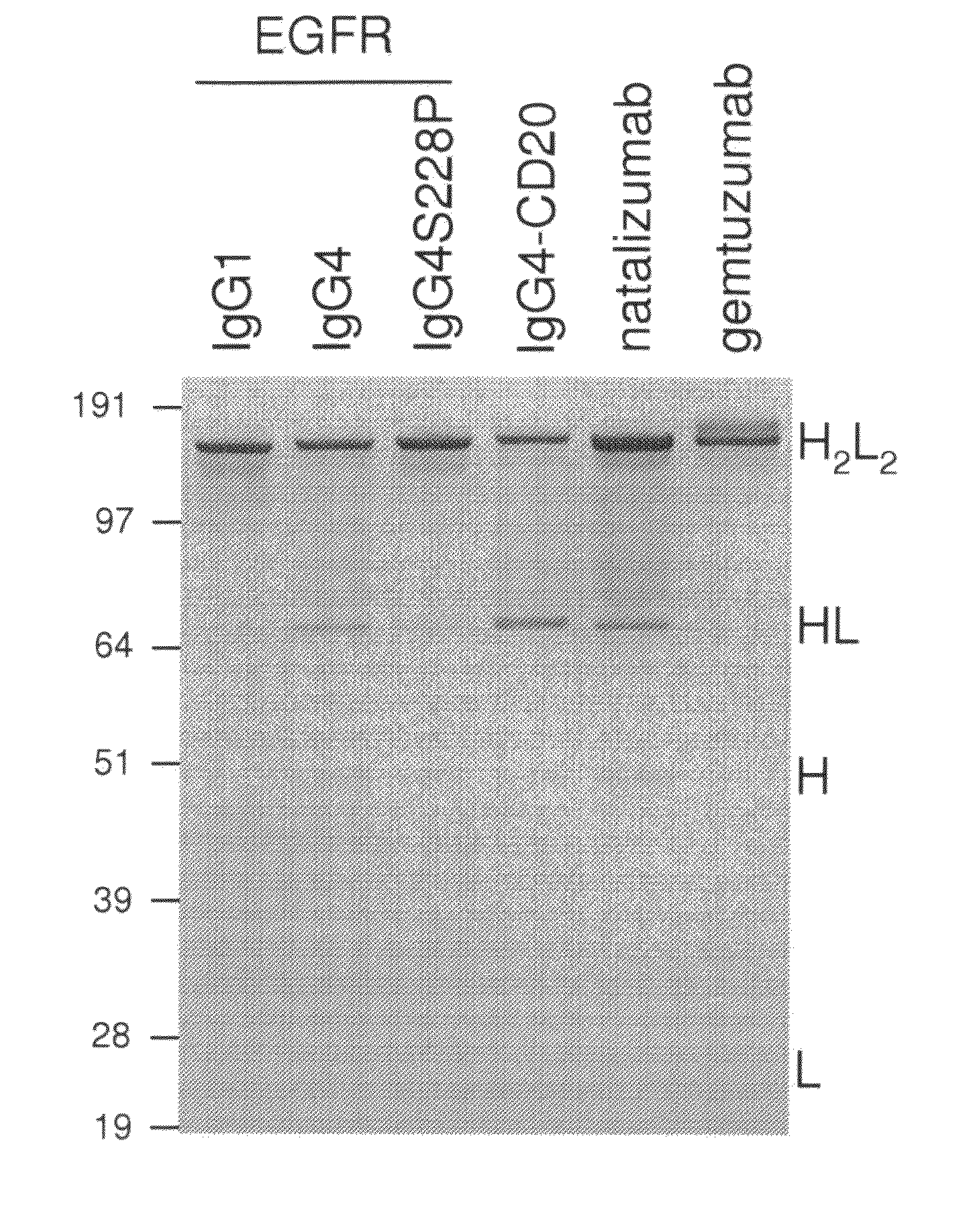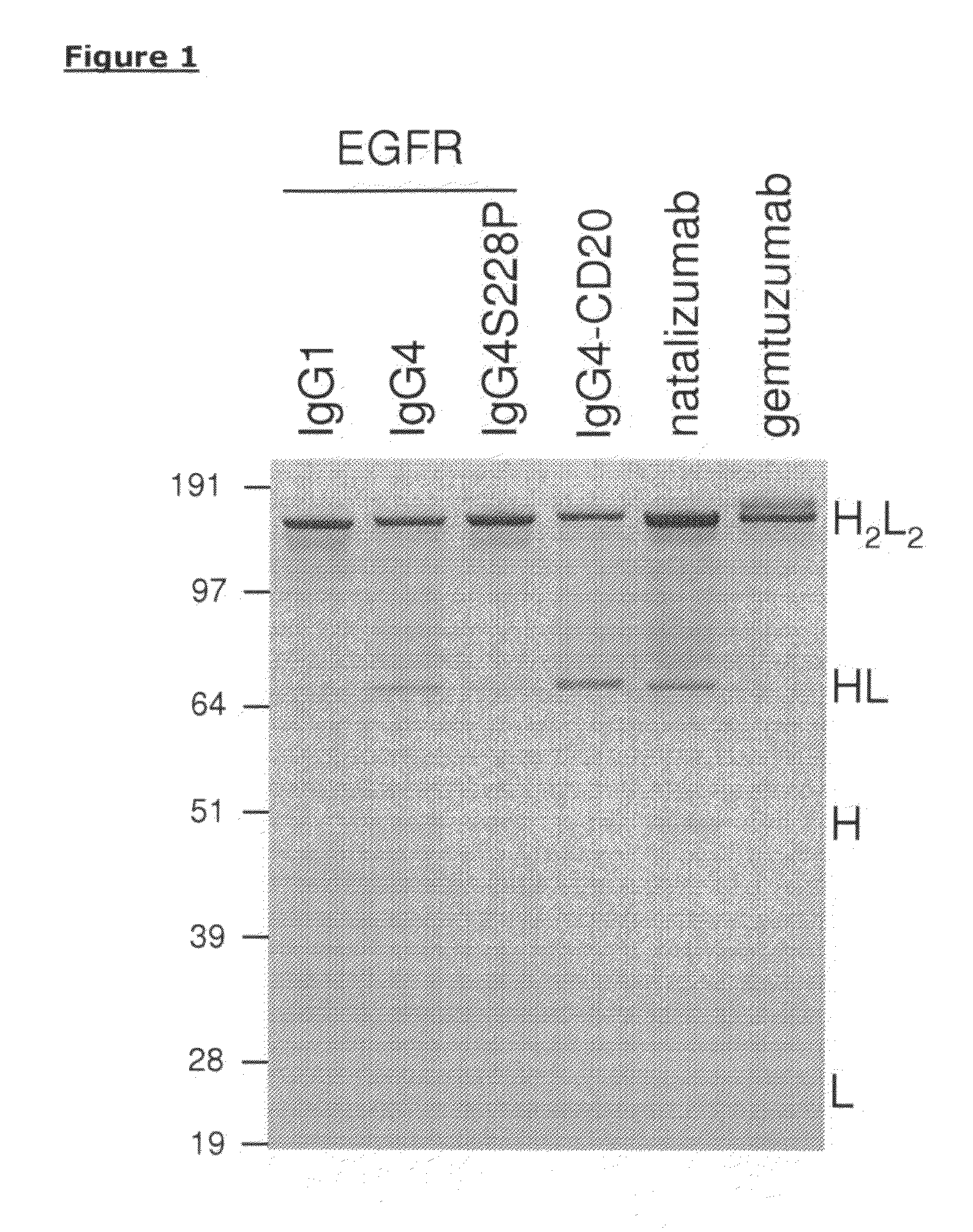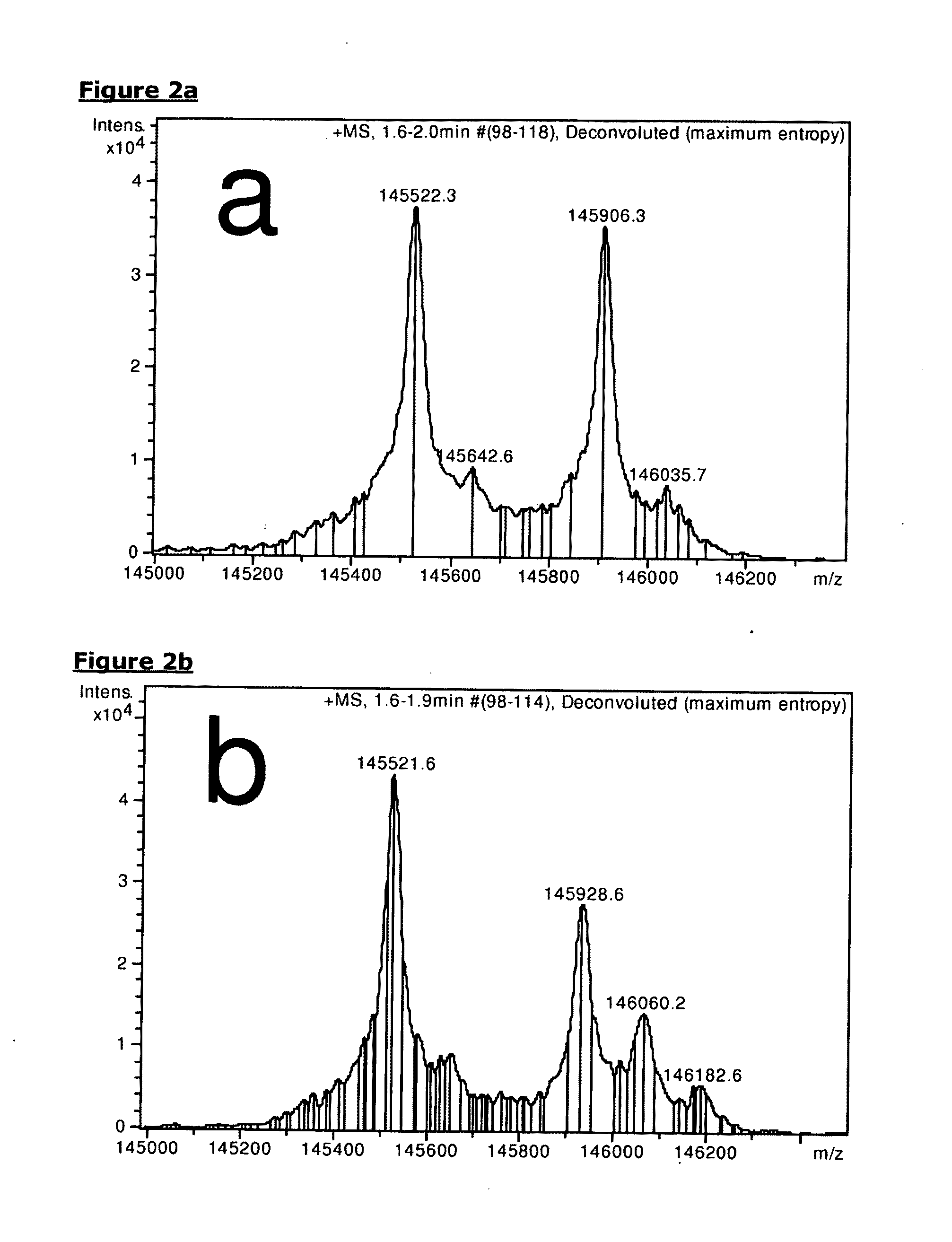Methods for assessing the risk of adverse events upon treatment with igg4 antibodies
- Summary
- Abstract
- Description
- Claims
- Application Information
AI Technical Summary
Benefits of technology
Problems solved by technology
Method used
Image
Examples
example 1
Materials and Experimental Procedures
Patient Samples
[0105]Plasma samples from MS patients starting natalizumab treatment were drawn under informed consent. Patients received natalizumab (at a dose of 300 mg) by intravenous infusion every 4 weeks. Blood samples were obtained before the start of therapy (T0; n=16) and at different time-points after subsequent infusions (T2-T6; see FIGS. 4 and 5). Sample drawing was done 4 weeks after the last infusion, just prior to the next infusion.
Cell Lines
[0106]Jurkat (human T-cell leukemia) and HL-60 (human acute myelogenous leukemia) cells were obtained from the American Type Culture Collection (ATCC) and National Institute of Health Science (NIHS), respectively. Both cell lines were cultured in RPMI-1640 medium (Lonza) supplemented with 10% heat-inactivated fetal bovine serum (Hyclone), 50 IU / ml penicillin and 50 μg / ml streptomycin. HEK-293F cells (Invitrogen) were cultured in Freestyle medium (Invitrogen). CHO-K1SV cells (Lonza) were cultured...
example 2
Analysis of Natalizumab and Gemtuzumab
[0128]To determine the type of core-hinge samples were of natalizumab and gemtuzumab were analyzed by non-reducing SDS-PAGE and compared to a matched set (IgG1, IgG4 and IgG4S228P) of a human monoclonal antibody (HuMab) directed against the epidermal growth factor receptor (EGFR), HuMab 2F8, and a human IgG4 directed against CD20, HumAb 7D8. Whereas the IgG1 showed intact antibodies under non-reducing conditions, the IgG4 molecules revealed substantial amounts of half-molecules in addition to intact antibodies (FIG. 1). The S228P mutation (IgG4S228P) stabilized the IgG4 molecule as demonstrated by the loss of half-molecules. Analysis of natalizumab revealed the presence of half-molecules indicative of a wild-type IgG4 core-hinge. Gemtuzumab, however, showed no half-molecules, indicating a stabilized core-hinge, and additionally displayed two intact antibody bands, most likely representing the calicheamicin-conjugated and the naked antibody molec...
example 3
Fab-Arm Exchange in Vitro
[0129]To study the effect of core-hinge stabilization alone on the exchange of Fab-arms in vitro, IgG4-EGFR, IgG4S228P-EGFR, natalizumab or gemtuzumab were mixed with IgG4-CD20 in equal amounts and incubated for 24 hrs at 37° C. in the presence or absence of 0.5 mM reduced glutathione (GSH). After deglycosylation of the mixtures, the resulting antibodies were analysed using electrospray ionization time-of-flight (ESI-TOF) mass-spectrometry. The molecular masses (of the main species without terminal lysines) of IgG4-CD20 (145.52 kDa), IgG4-EGFR (145.91 kDa), IgG4S228P-EGFR (145.93 kDa), natalizumab (145.93 kDa) and gemtuzumab (144.98 kDa) remained unchanged in the absence of GSH (FIG. 2a-d). In the presence of GSH, peaks with intermediate masses (145.71 kDa and 145.72 kDa) appeared in the mixture containing IgG4-EGFR and natalizumab, respectively, corresponding to the expected masses of CD20 / EGFR and CD20 / α4 integrin bispecific antibodies (FIGS. 2e and 2g). N...
PUM
| Property | Measurement | Unit |
|---|---|---|
| half life | aaaaa | aaaaa |
| half life | aaaaa | aaaaa |
| half life | aaaaa | aaaaa |
Abstract
Description
Claims
Application Information
 Login to View More
Login to View More - R&D
- Intellectual Property
- Life Sciences
- Materials
- Tech Scout
- Unparalleled Data Quality
- Higher Quality Content
- 60% Fewer Hallucinations
Browse by: Latest US Patents, China's latest patents, Technical Efficacy Thesaurus, Application Domain, Technology Topic, Popular Technical Reports.
© 2025 PatSnap. All rights reserved.Legal|Privacy policy|Modern Slavery Act Transparency Statement|Sitemap|About US| Contact US: help@patsnap.com



